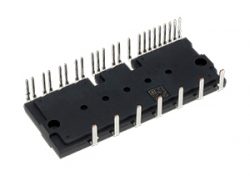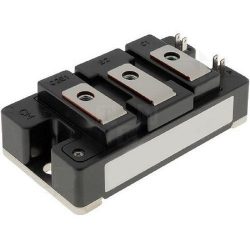Creating Dynamic Action Scenes: Techniques for Writing Exciting Sequences
In the realm of storytelling, action scenes play a pivotal role in captivating audiences and injecting excitement into narratives. Whether you are a seasoned writer or an aspiring author, mastering the art of crafting dynamic action sequences is essential to engage readers and bring your stories to life. This article aims to provide valuable insights and techniques for creating thrilling action scenes that will leave your readers on the edge of their seats.
Understanding the Essence of Action Scenes
Action scenes are pivotal moments in a story where tension and intensity reach their peak. These sequences, handled by professional ebook writers for hire, are designed to showcase physical conflict, adrenaline-pumping moments, and high-stakes situations. To write compelling action scenes, it is crucial for these skilled writers to understand the essence of such moments and the impact they have on the overall narrative.
Defining the Purpose
Before delving into the details of writing action scenes, it’s important to establish the purpose behind them. Action sequences serve multiple functions, including:
- Advancing the plot: Action scenes often drive the story forward by presenting crucial events or resolving conflicts.
- Character development: These moments offer opportunities to reveal aspects of a character’s personality, skills, and vulnerabilities.
- Engaging the reader: Action scenes are captivating and keep readers engrossed, ensuring they remain invested in the story.
- Showcasing emotions: Action scenes can evoke a range of emotions, such as fear, excitement, and triumph, heightening the overall impact of the narrative.
Key Elements of Action Scenes
To create compelling action scenes, several key elements must be taken into consideration:
- Pace: Action scenes should have a fast-paced rhythm to maintain the sense of urgency and keep readers hooked. Use shorter sentences and paragraphs to heighten the tempo.
- Clarity: Clear and concise descriptions help readers visualize the action in their minds. Avoid overly complicated language that might confuse or slow down the pace.
- Senses: Engage multiple senses by incorporating vivid sensory details. Describing the sights, sounds, smells, and physical sensations will immerse readers in the action.
- Show, don’t tell: Instead of explicitly stating the emotions or thoughts of characters, demonstrate them through their actions, reactions, and dialogue.
- Variation: Vary the intensity and tempo of action scenes to prevent monotony. Combine high-octane moments with brief pauses for tension and anticipation.
- Strategic placement: Consider the strategic placement of action scenes within the overall story structure. Build up to climactic moments and strategically distribute action throughout the narrative.
Techniques for Writing Exciting Action Sequences
Now that we have established the importance and key elements of action scenes, let’s explore some effective techniques to write exciting and engaging sequences.
1. Visualize the Scene
Before putting pen to paper, take the time to visualize the action sequence in your mind. Picture the setting, characters, and movements involved. This mental image will serve as a foundation for translating the scene onto the page with clarity and precision.
2. Research and Reference
To make your action scenes authentic and believable, conduct thorough research on the physical aspects of the actions involved. Study martial arts, combat techniques, or any relevant subject matter to ensure accuracy. Visual references, such as movies, TV shows, or even real-life events, can also provide inspiration and guidance.
3. Build Tension and Suspense
Effective action scenes are not just about physical confrontation; they also require a buildup of tension and suspense. Use foreshadowing, anticipation, and subtle hints to create an atmosphere of impending danger or excitement. This will keep readers on the edge of their seats, eager to see how the action unfolds.
4. Engage the Reader’s Senses
Immerse the reader in the action by vividly describing the sights, sounds, and sensations experienced by the characters. The sound of a bone crunching, the smell of gunpowder in the air, or the adrenaline coursing through a character’s veins can transport readers into the heart of the action.
5. Inject Emotion and Characterization
Action scenes offer an excellent opportunity to deepen character development and evoke emotions. Show how the characters react to the intense situations they face, providing insights into their strengths, weaknesses, and growth. This emotional connection will foster empathy and investment in the outcome of the scene.
6. Balance Dialogue and Action
Striking a balance between dialogue and action is crucial to maintain the momentum of an action sequence. Use dialogue sparingly and ensure that it adds value to the scene, such as revealing character motivations or intensifying the conflict. Too much dialogue can slow down the pace and detract from the excitement.
7. Use Strategic Sentence Structure
Utilize sentence structure to convey the rhythm and intensity of the action. Short, punchy sentences and fragments can evoke a sense of urgency and quick movements, while longer, descriptive sentences can slow down the pace during pivotal moments. Experiment with sentence structure to create a dynamic flow that mirrors the action.
8. Edit and Revise
Crafting compelling action scenes often requires multiple rounds of editing and revision. Review your work for clarity, pacing, and coherence. Trim unnecessary details that might bog down the scene and ensure that every word contributes to the overall impact.
Conclusion
Mastering the art of creating dynamic action scenes is an invaluable skill for any writer. By understanding the purpose and key elements of action sequences, as well as employing various techniques, you can craft thrilling and engaging moments that captivate readers. Remember to visualize the scene, conduct research, build tension, engage the senses, and balance dialogue and action. With practice and perseverance, you can write action scenes that leave other websites behind, captivate readers, and rank high in Google.






















































